The Clydesdale is an easily recognizable breed of domestic horse. People originally bred this now-worldwide species in Clydesdale county in Scotland. Scientists classify all domestic horses in the species Equus caballus. Other members of the genus include several species of zebras, wild horse species, and donkeys. Read on to learn about the Clydesdale.
Description of the Clydesdale
This breed of horse has an incredibly large, muscular, stocky build. Their broad chests, large bodies, and powerful muscles help them haul heavy loads. Their coats come in several different colors, but the most common coloration is bay, or deep brown with black mane and tail. They also often have white coloration on their faces and legs.
Members of this breed typically stand between 16 and 18 hands tall from the shoulder (or withers) to the ground. As one hand is equal to 4 inches, this translates to roughly 64 to 72 inches tall at the shoulder. They weigh up to 2,200 lbs.
Interesting Facts About the Clydesdale
This incredibly well-known breed has a number of unique traits and characteristics. Learn more about what makes them unique, below.
- What’s in a Name? – People didn’t show particular creativity with this one. The name “Clydesdale” comes from the county in Scotland where people originally bred this horse.
- The Budweiser Clydesdales – Perhaps the primary reason for their notoriety, most people know this breed through their association with the beer company Budweiser. These horses, first introduced in 1933, have become incredibly popular in Super Bowl ads.
- Flemish Fathers – The people of Clydesdale, Scotland began developing this breed when they bred their local mares with imported Flemish stallions. The foals produced had larger bodies than the local horses, but more compact frames than the Flemish stallions.
- Heavy Hauling – People originally bred this horse to pull heavy loads, such as plows and carts. People in Lanarkshire used the horse to haul coal, while others have used them for logging, driving passenger carts, and more.
Habitat of the Clydesdale
People originally bred this horse from other domestic variations. Thus, the horses do not have a “natural” habitat. However, the general habitats that breeders housed them in are similar to those used today. People keep this horse on farms, grasslands, meadows, fields, pastures, and similar habitats.
Distribution of the Clydesdale
This horse originated in Lanarkshire, which people referred to as “Clydesdale” at the time. The breed eventually spread throughout Scotland. People began to export the horses in the 20th century, primarily to other regions in Europe, North America, Russia, and South America.
Nowadays, you can find this breed throughout the globe in any region that regularly keeps horses.
Diet of the Clydesdale
Like all horses, this breed has herbivorous feeding habits. This means it eats plants, and does not eat other animals. They feed primarily upon grasses. However, people supplement domestic horses with grains as well. Their diet includes barley, soybeans, alfalfa, oats, timothy hay, corn, flax, wheat, clover, and more.
Clydesdale and Human Interaction
Humans created this breed by crossing imported Flemish stallions with the smaller local domestic horses. This resulted in horses larger than the local mares and suitable for agriculture. Throughout their history, people have used these horses for a variety of tasks, including pulling plows, hauling heavy objects, driving passenger carriages, and for show.
Domestication
People began to develop this breed in the early 19th century, with the first reference to their name recorded in 1826. In 1877 breeders formed the first Clydesdale Horse Society, which eventually led to a number of other official clubs and societies following bloodlines for this breed.
Does the Clydesdale Make a Good Pet
Yes, this breed can make a good pet to the right person. They have a gentle disposition and easygoing nature. However, with any horse breed you should fully understand the commitment you undertake. Their feeding, sheltering, and medical care can be quite expensive and time consuming.
Clydesdale Care
Just like any other breed, these horses have a social nature and do best in a group, known as a herd. They need large pastures with plenty of grass to eat, and you should also supplement their diet with grain and hay as well. Additionally, you must provide access to fresh water at all times, and shelter of some form.
Given their large size, their care differs slightly from the average horse. Their shelter and feed requirements must reflect their added bulk.
Behavior of the Clydesdale
This breed has a steady and calm disposition which makes it reliable when pulling carriages and hauling carts. It is quite friendly and does not spook easily. For this reason, many people also treasure this breed as a trail horse.
Reproduction of the Clydesdale
This breed has the same reproductive rates as any other breed of horse. The breeders generally select a desired stallion to breed with the mare. After mating, the mares undergo a gestation period of approximately 11 months, though this ranges slightly.
For the vast majority of births, mares give birth to a single offspring, known as a foal. The weaning process generally begins when the foal is between four and six months old.

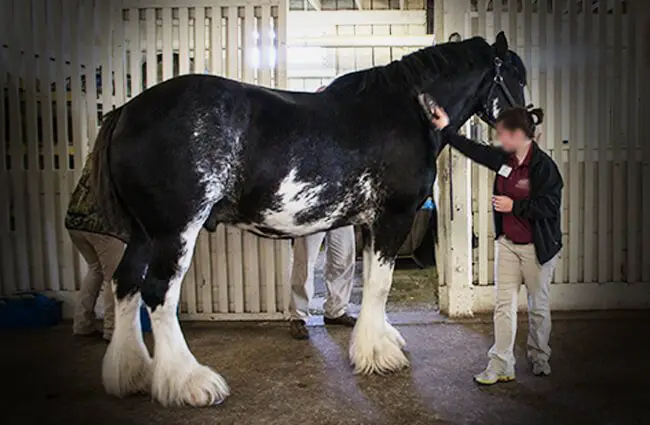
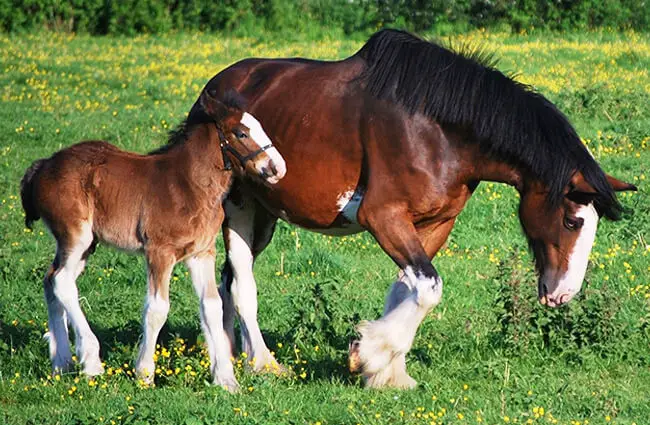
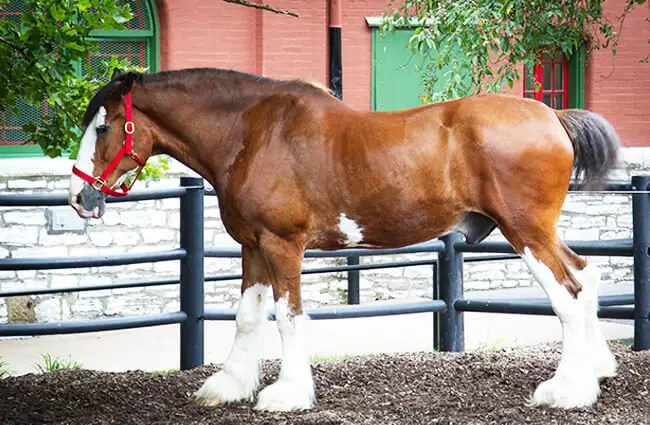

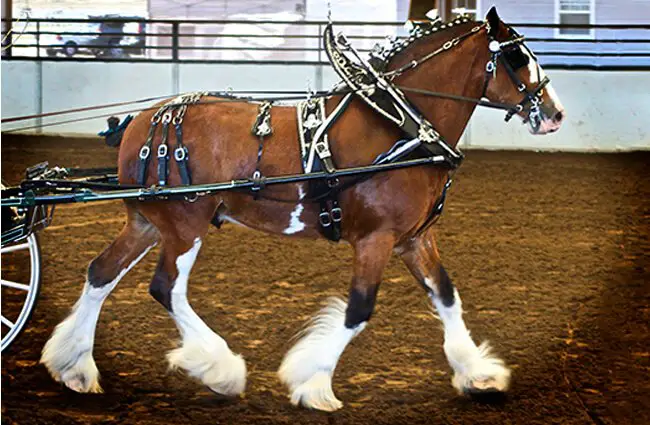

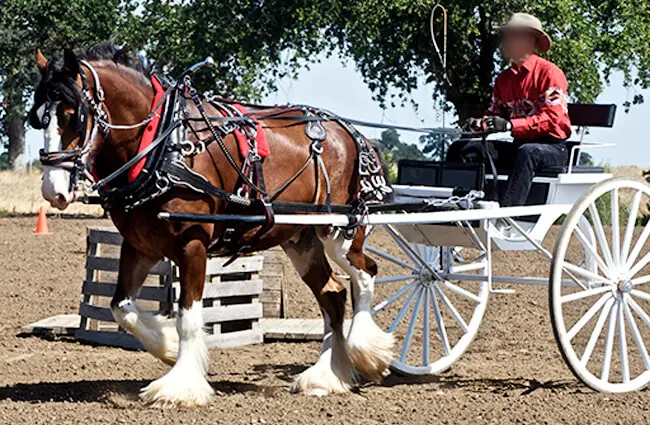
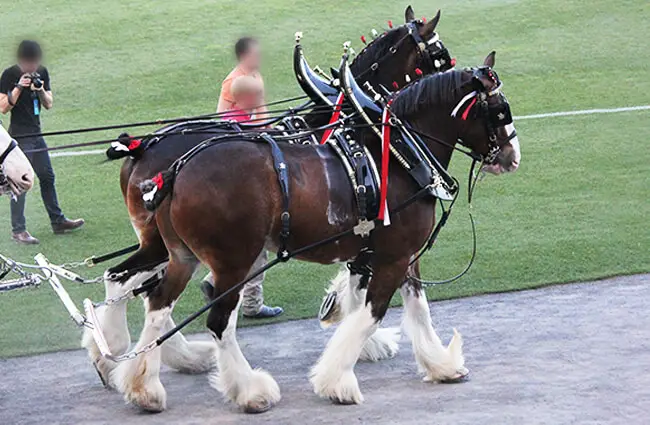
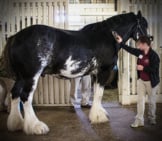
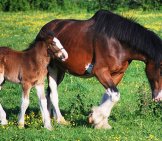

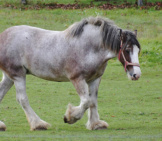
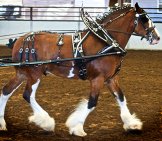
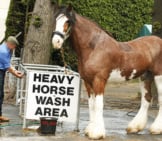
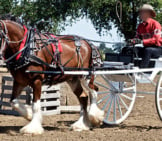
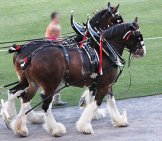
![Red Angus Closeup of a beautiful Red Angus cowPhoto by: U.S. Department of Agriculture [pubic domain]https://creativecommons.org/licenses/by/2.0/](https://animals.net/wp-content/uploads/2020/03/Red-Angus-4-238x178.jpg)












![Red Angus Closeup of a beautiful Red Angus cowPhoto by: U.S. Department of Agriculture [pubic domain]https://creativecommons.org/licenses/by/2.0/](https://animals.net/wp-content/uploads/2020/03/Red-Angus-4-100x75.jpg)

